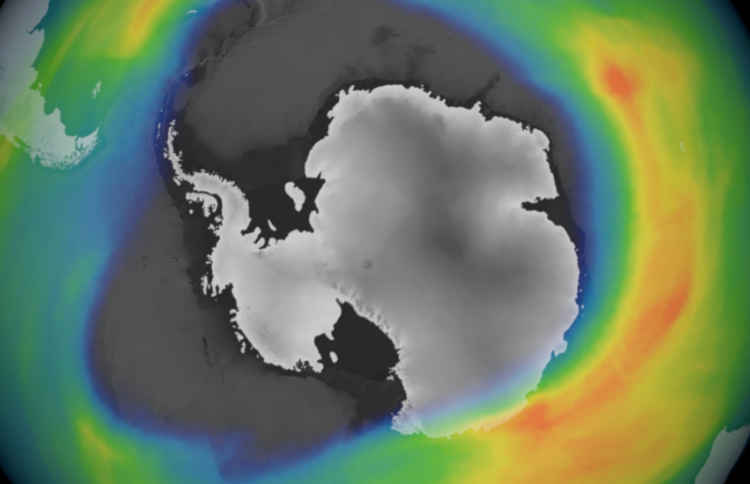
Climate change or volcanoes may be responsible, researchers have suggested.
The ozone hole over Antarctica is closing a month later than usual for the third year in a row, according to a recent report by the EU’s Copernicus Earth Observation Program. While the hole has mostly shrunk since the early 2000s, scientists cannot explain why it is now persisting for longer.
The Antarctic ozone hole usually opens in September before contracting in November, coinciding with springtime in the southern hemisphere. This year, the hole is expected to close in the coming days, Copernicus scientists wrote last week.
The delayed closure comes after 2021’s ozone hole lasted until December 23, and 2020’s remained open until December 28 – the longest duration on record. Puzzlingly, the hole in 2019 was the smallest and shortest-lived since observation began in 1979.
The depletion of the ozone layer has been observed since the late 1970s, and the Montreal Protocol – a ban on ozone-depleting chemicals which came into effect in 1989 – has been credited with halting this decline. The area of the Antarctic ozone hole peaked in 2000, and has been slowly shrinking since.
While the Copernicus team don’t know exactly why the hole has lasted so long in recent years, they have put forward some suggestions. First they cited global warming, which they said paradoxically causes the middle and upper stratosphere to cool, prolonging the duration of the hole. Secondly, they suggested that the eruption of the Hunga Tonga-Hunga Ha’apai volcano in January may have disrupted the stratosphere’s normal aerosol balance. However, the “precise role” of the eruption in this year’s ozone hole “is still a research question,” they conceded.
The ozone layer filters between 97% and 99% of the Sun’s ultraviolet (UV) radiation, allowing life to flourish on Earth. Exposure to UV radiation increases the risk of skin cancer, ocular damage, and premature aging.
Image credit: The European Space Agency

China.
The ozone layer was discovered in 1986 and when it was found it had a hole in it, it has never been seen without one, the article on Wikipedia from a few years back told me that the normal amount of ozone in the layer was 6 ppm but when the hole turns up it drops to 4 ppm, sadly this info seems to have disappeared, back in 93 all of a sudden it was CFC’s that were going to kill us so they had to be banned, for those who are unaware CFC’s were actually the refrigerant Freon so everything that used it had to be changed, funnily enough the Freon which is heavier than air managed to ascend 50 or 60 kilometers to the layer to chomp down on the ozone, my considered opinion includes magic ducks for that one, but there’s one more thing to consider about this swindle, at the time that this happened Duponts world wide patent on Freon was due to expire so there is the real answer, as usual it was the usual suspects.
Ahhhh! Finally the real answer re Freon…. Dupont…. very simple….